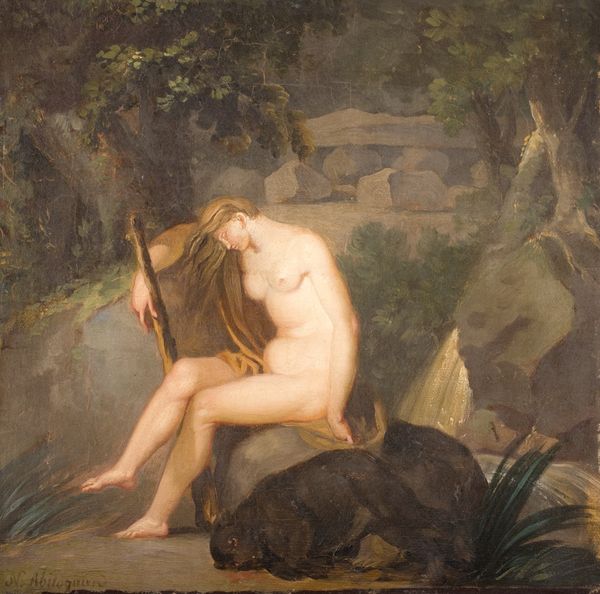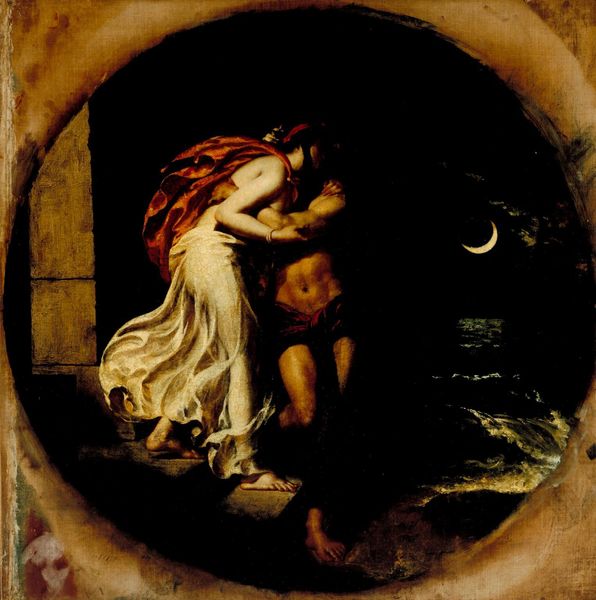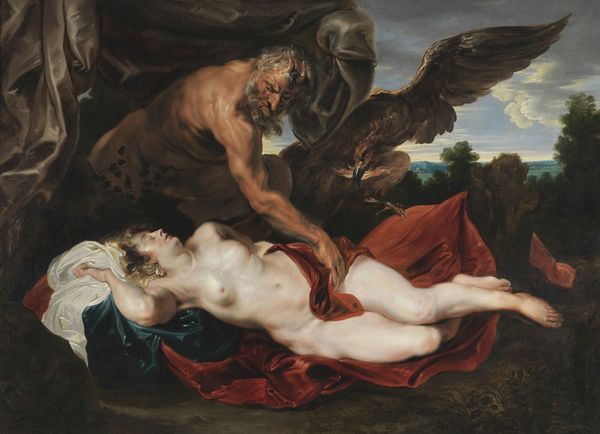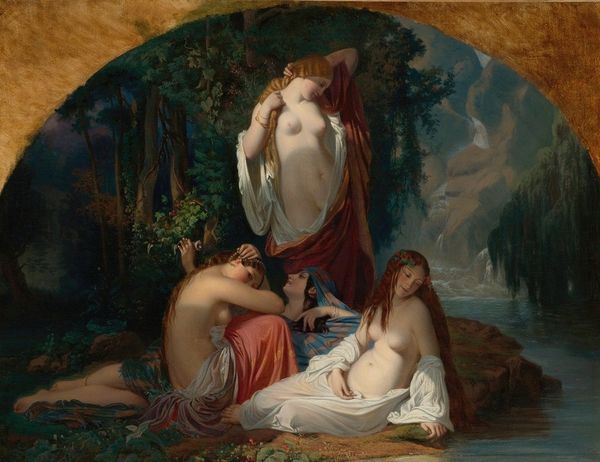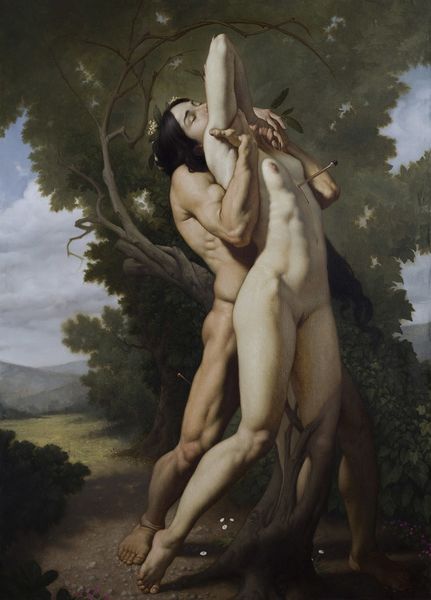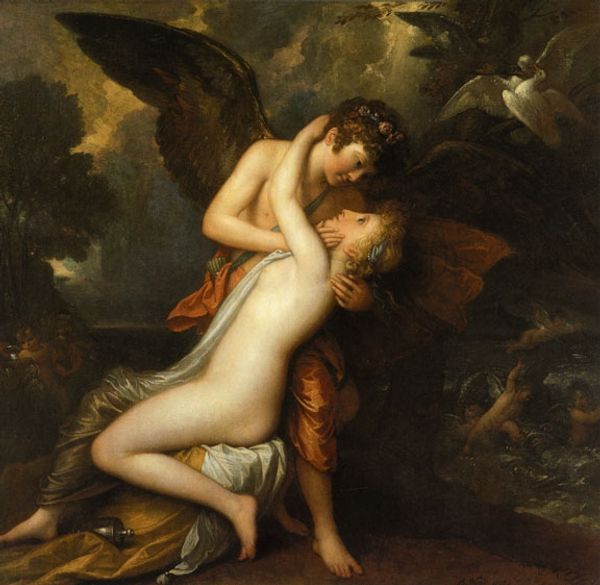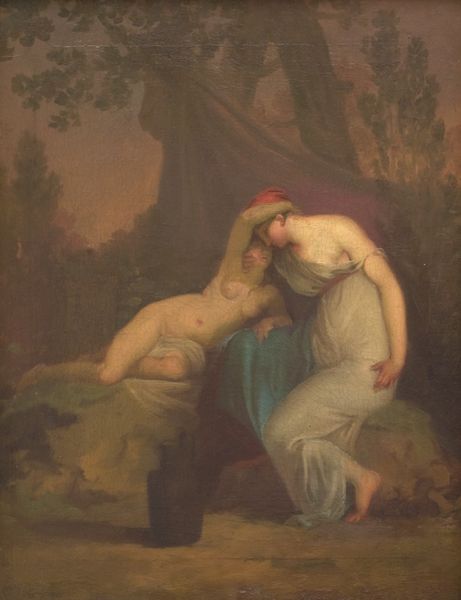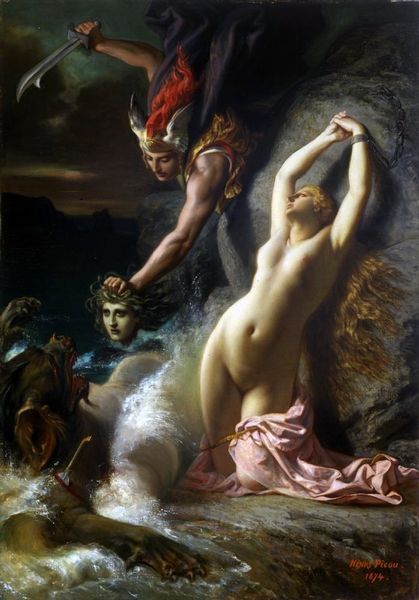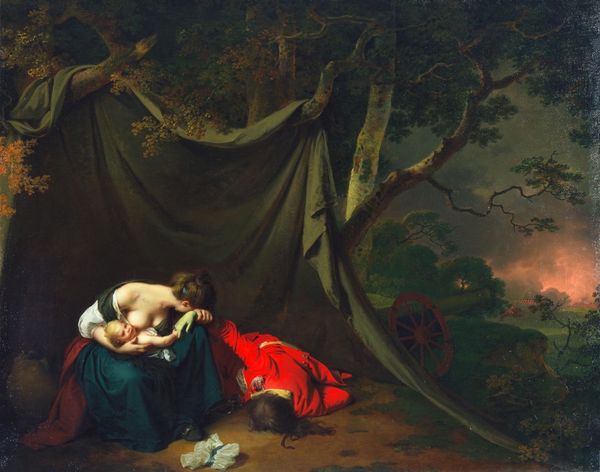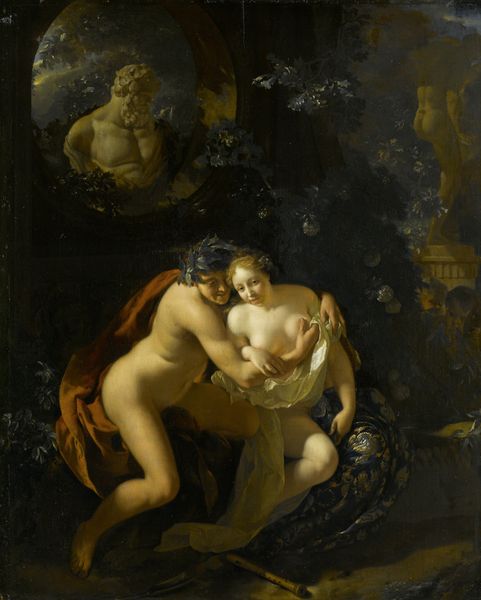
painting, oil-paint
#
allegory
#
painting
#
oil-paint
#
landscape
#
figuration
#
romanticism
#
mythology
#
history-painting
#
lady
Copyright: Public domain
Curator: Let’s discuss “Celadon and Amelia,” a landscape painting realized with oil paints by William Hamilton in 1793. What are your initial impressions? Editor: Immediately, I feel a sense of impending doom hanging over this little patch of brightness. There's such stark contrast—a brightly lit clearing occupied by the figures contrasted with dark, brooding woods closing in. The scene seems…precarious. Curator: Indeed. The composition places the figures within a liminal space, highlighting their vulnerability. The cool tones of the background enhance the luminosity of Amelia’s dress. William Hamilton masterfully directs our focus. Editor: Her dress… It almost seems to be swallowing her, like a shroud. The way it drapes so heavily—it is oddly beautiful and morbid, isn't it? There's something about her posture that says, "I have completely given up." And Celadon...he almost seems more afraid than comforting. Curator: Interesting. The painting operates as a historical allegory deeply rooted in Romanticism, where emotion and individualism took precedence. Her fragility is emphasized, contrasted against Celadon's robust form as he is positioned, ostensibly, to catch her. Editor: Allegory, yes. Though her limp posture evokes less romantic rescue than a pre-Raphaelite Ophelia, somehow transplanted into the late 18th century. It makes you wonder what narrative darkness underpins the seeming serenity. Do you think there's something deeper beneath this story? Curator: The painting illustrates a passage from James Thomson's poem *The Seasons*, where Amelia tragically dies in Celadon's arms after being struck by lightning. We witness the climactic intersection of passion, death, and the sublime. Hamilton harnesses classical mythological frameworks in a late eighteenth-century historical mode. Editor: Death by lightning—spectacular! It's a scene drenched in symbolism, reflecting a world on the cusp of enormous change, but rooted in classical archetypes. He captured it all perfectly. Curator: Indeed. "Celadon and Amelia" masterfully illustrates the anxieties inherent in that epoch, mirroring its aesthetics, political climate, and emerging social sentiments. Editor: A tempestuous glimpse into history, artfully portrayed with shadow and light. Thanks to William Hamilton for letting us look on in all our twenty-first century, enlightened morbidity.
Comments
No comments
Be the first to comment and join the conversation on the ultimate creative platform.
